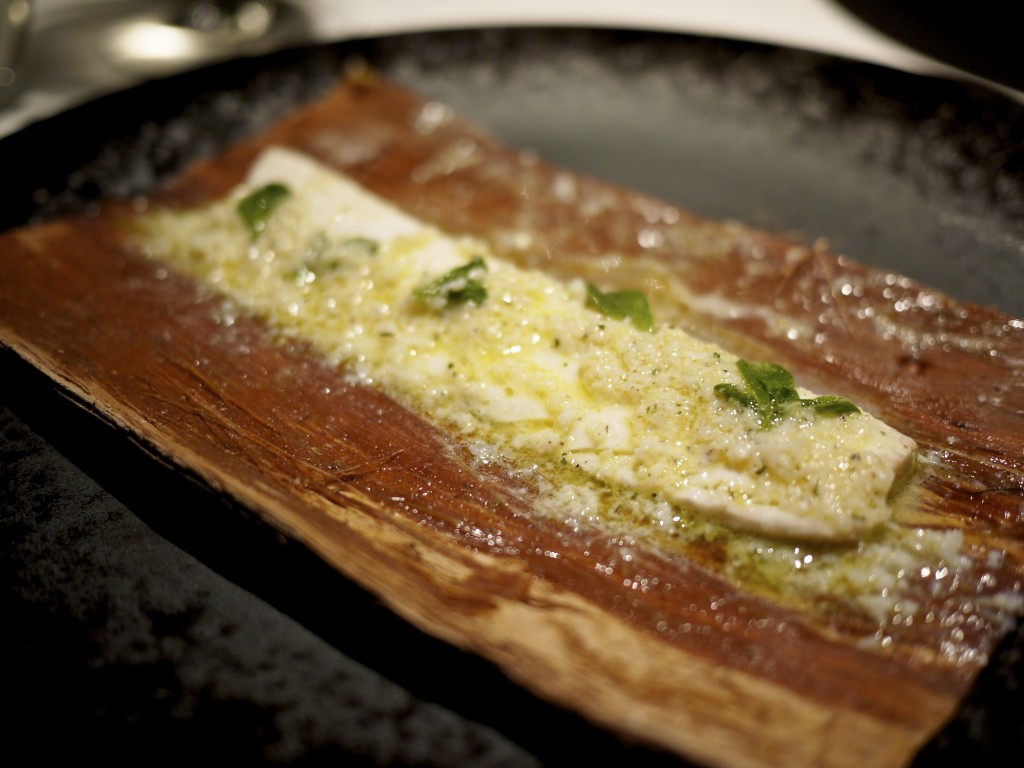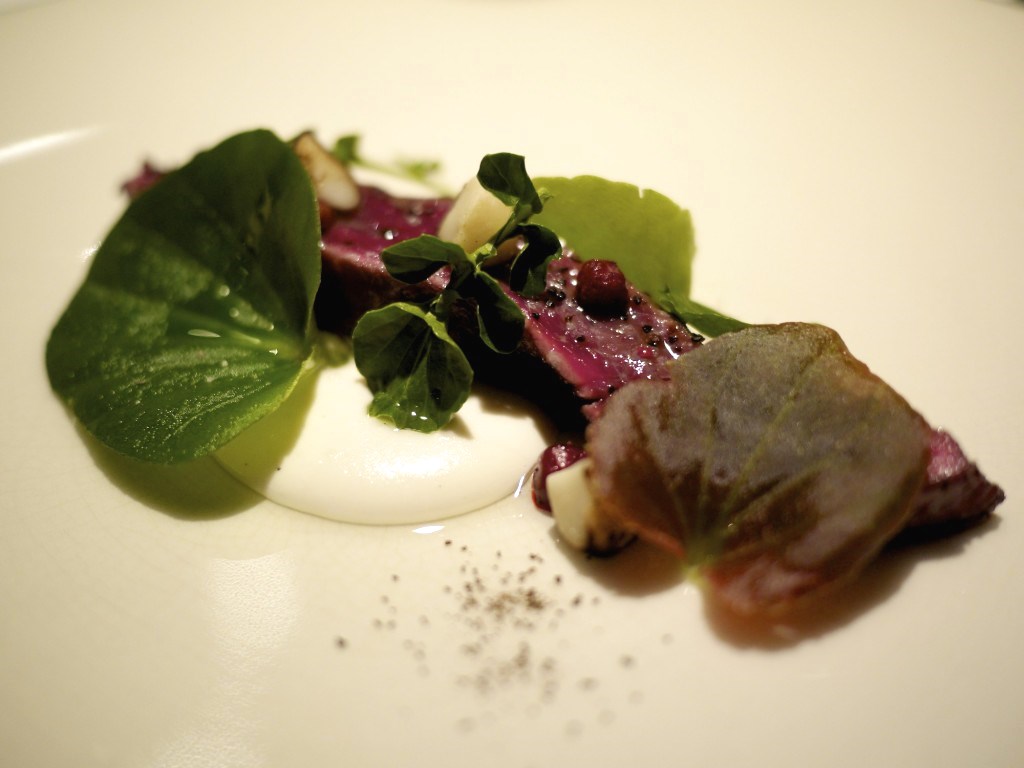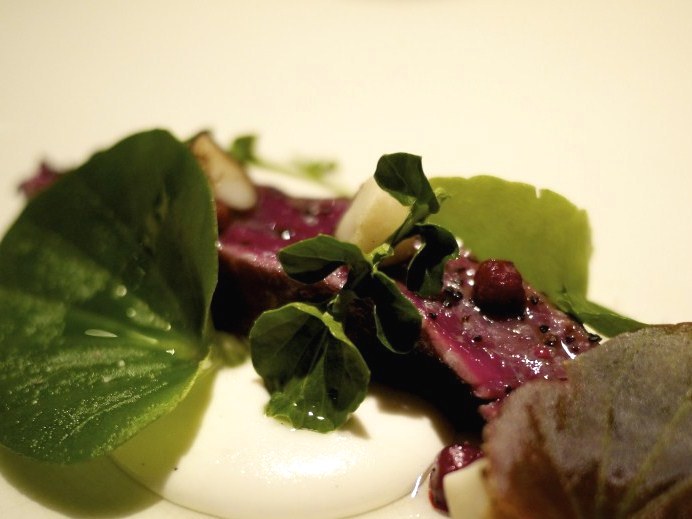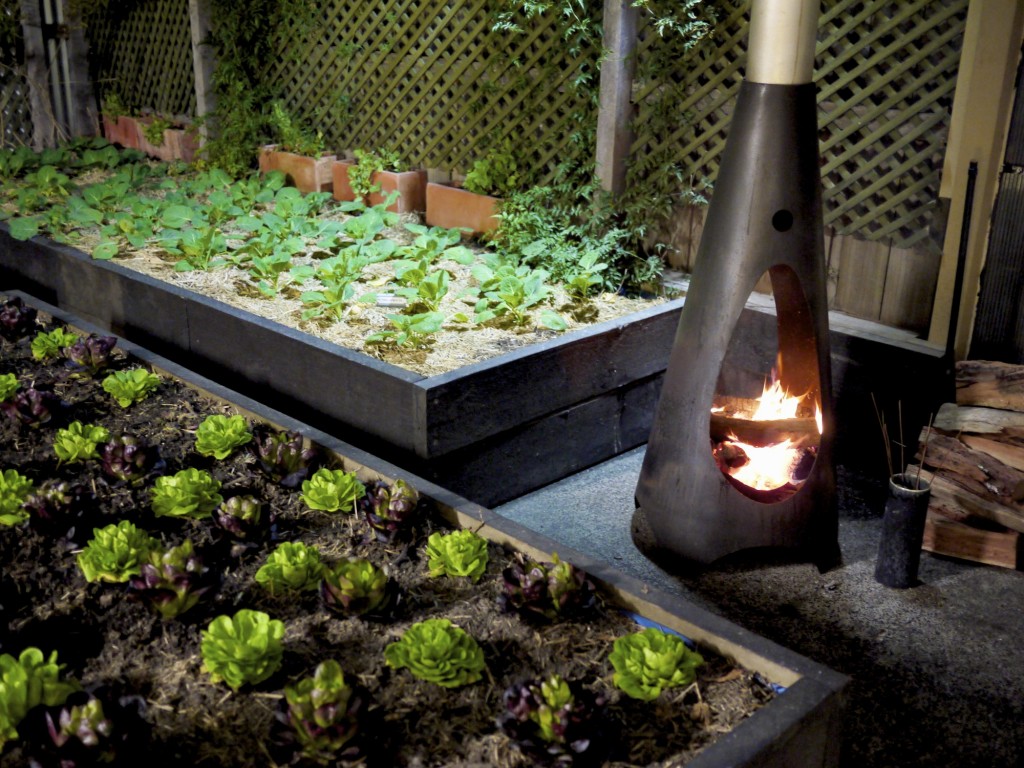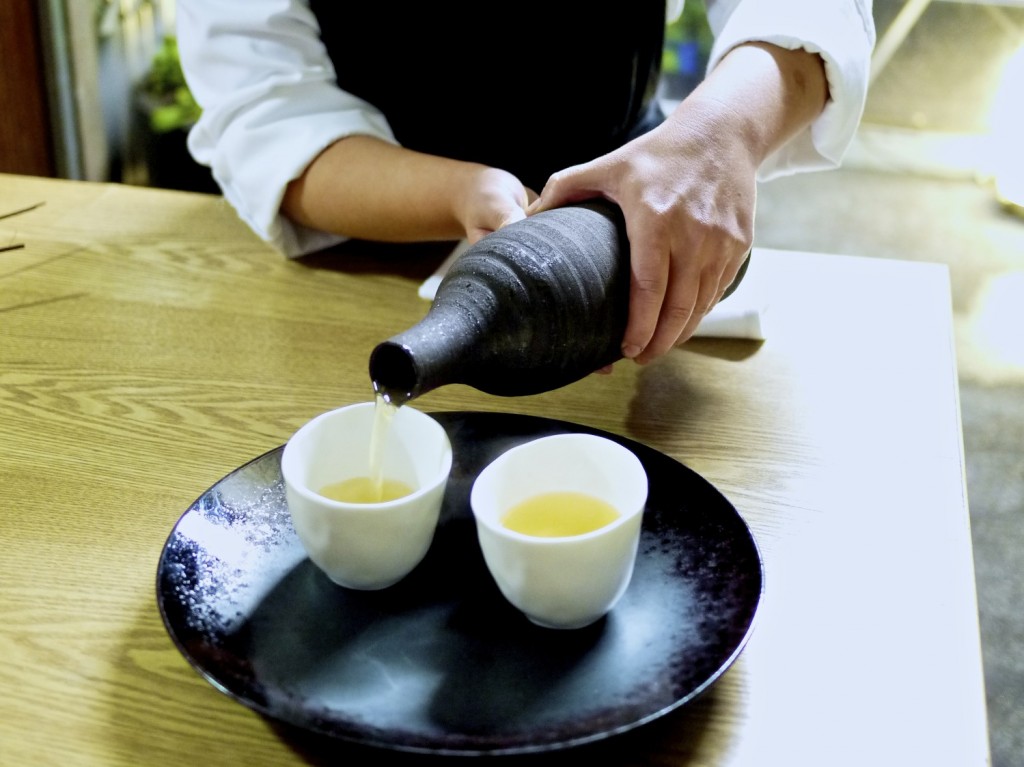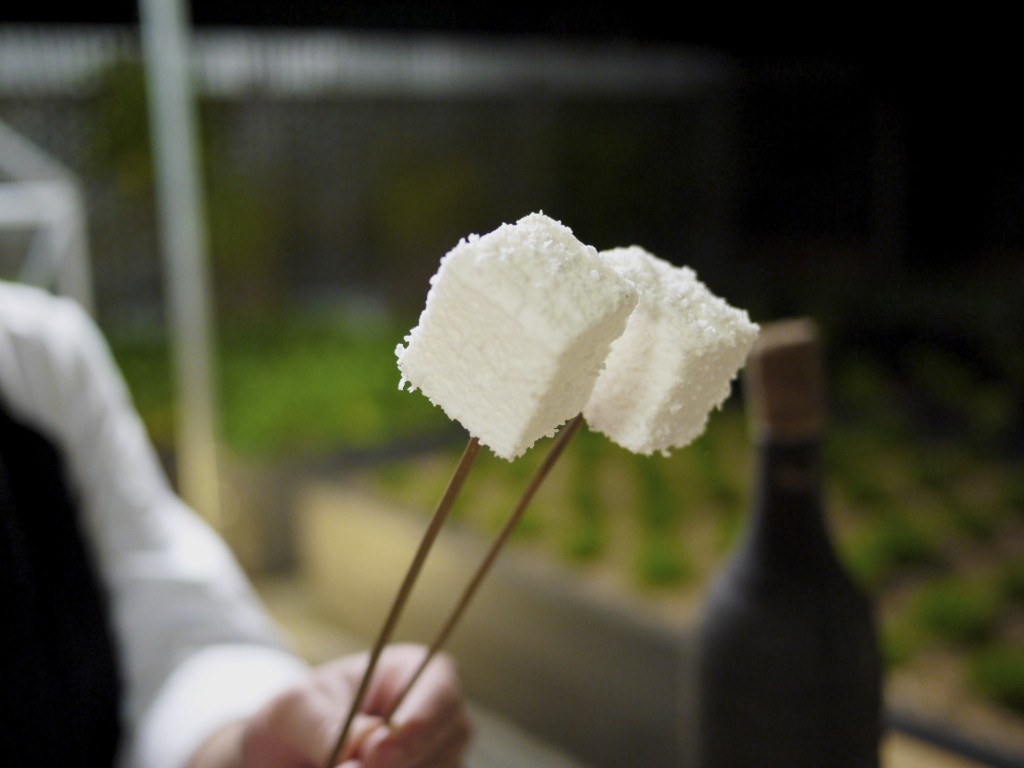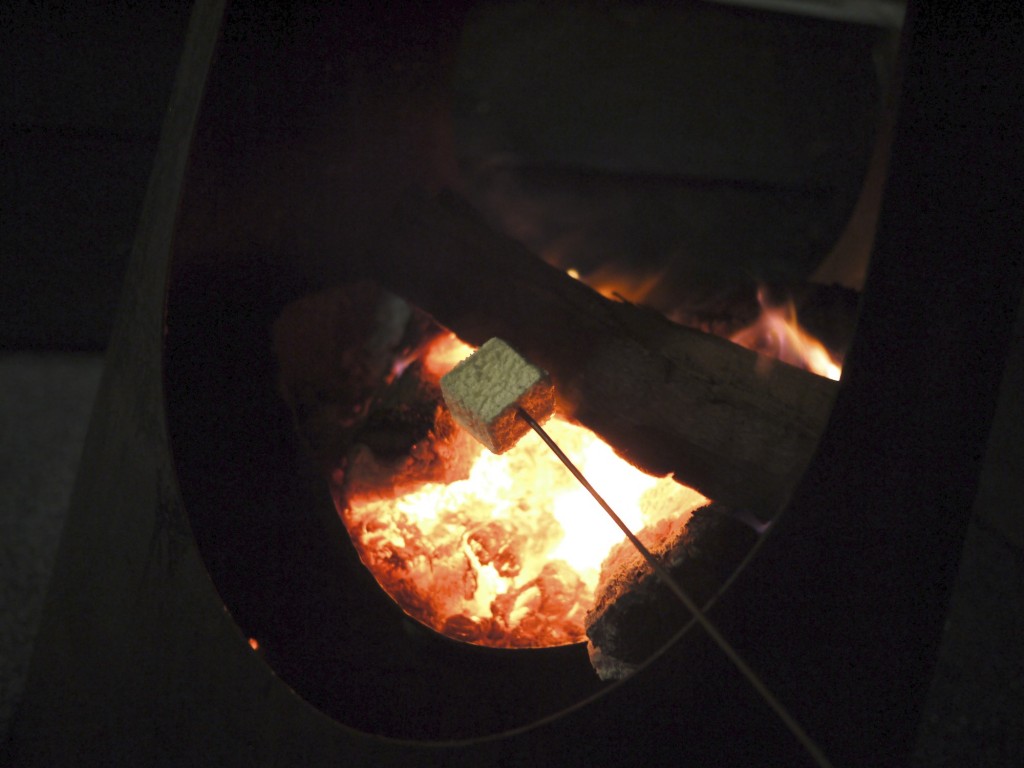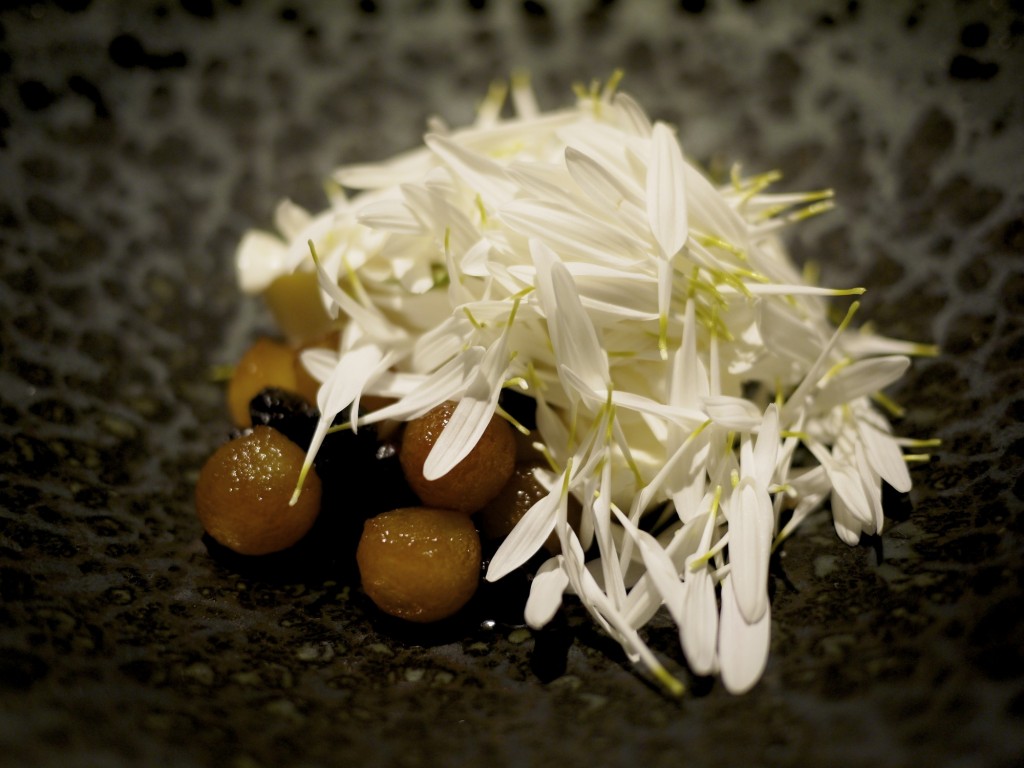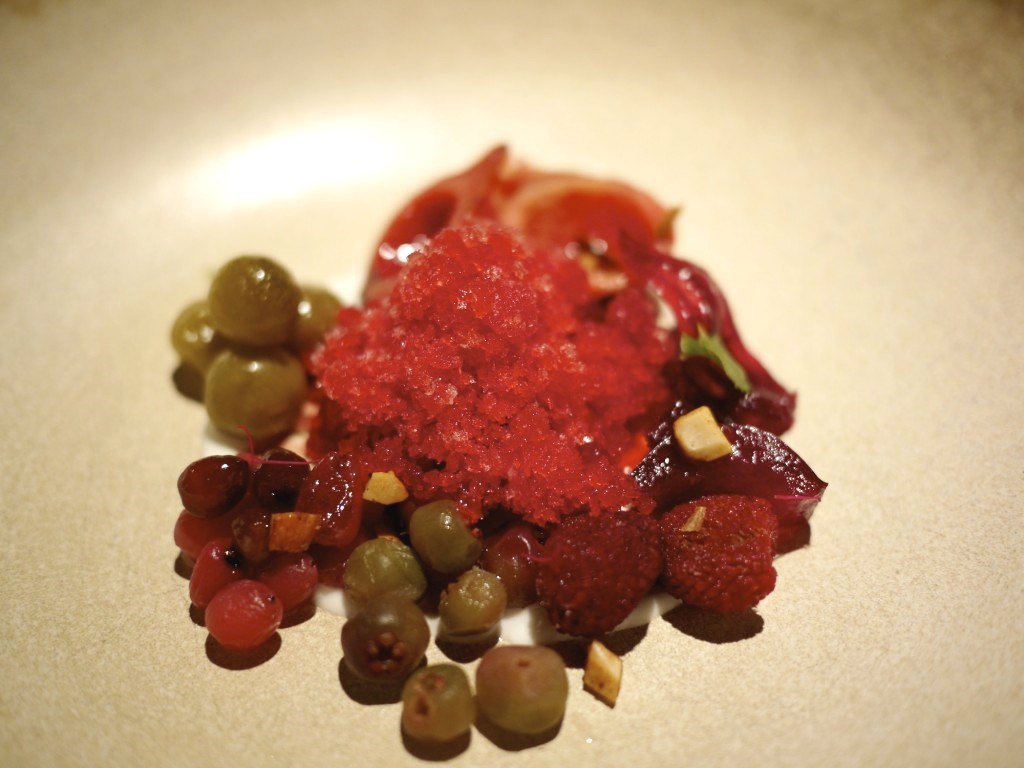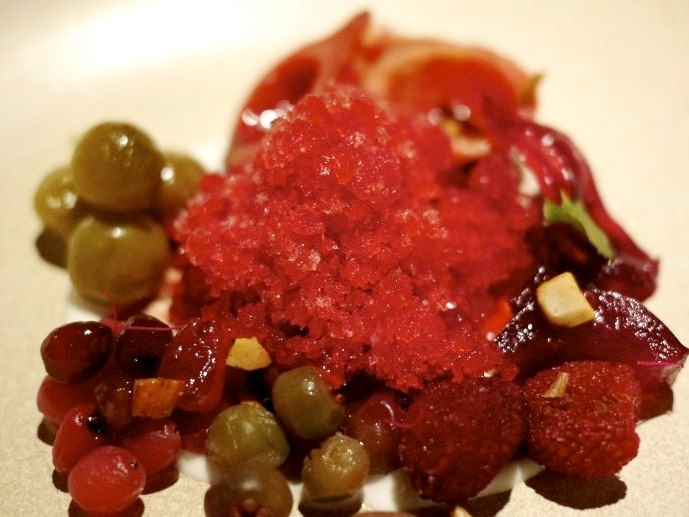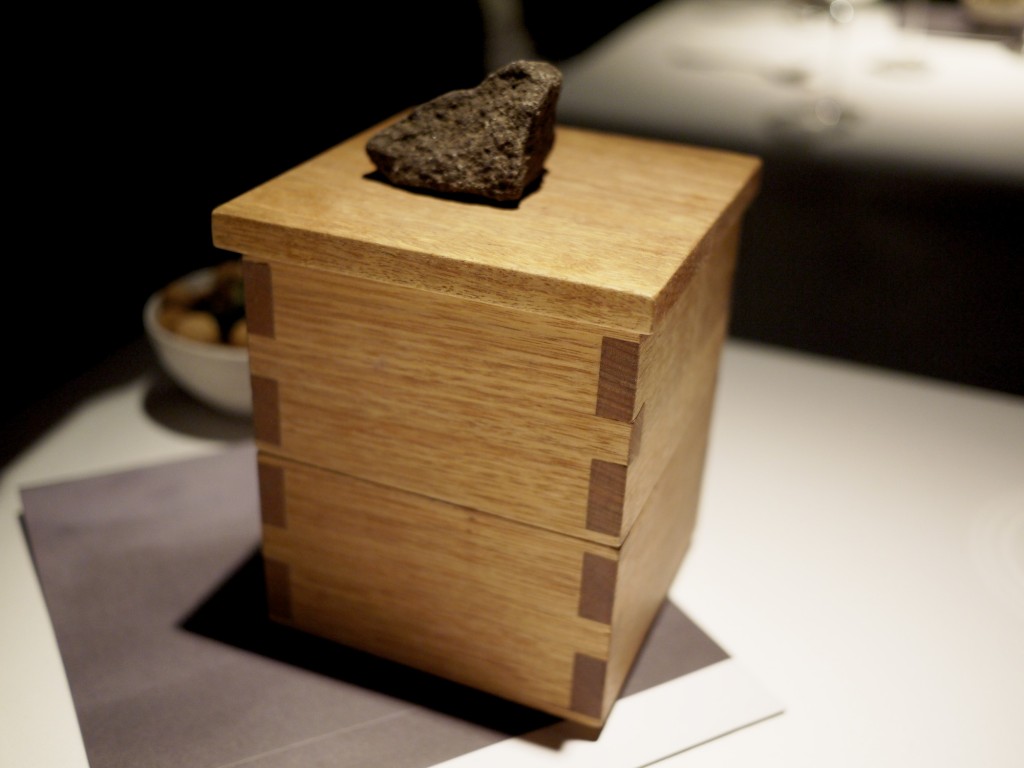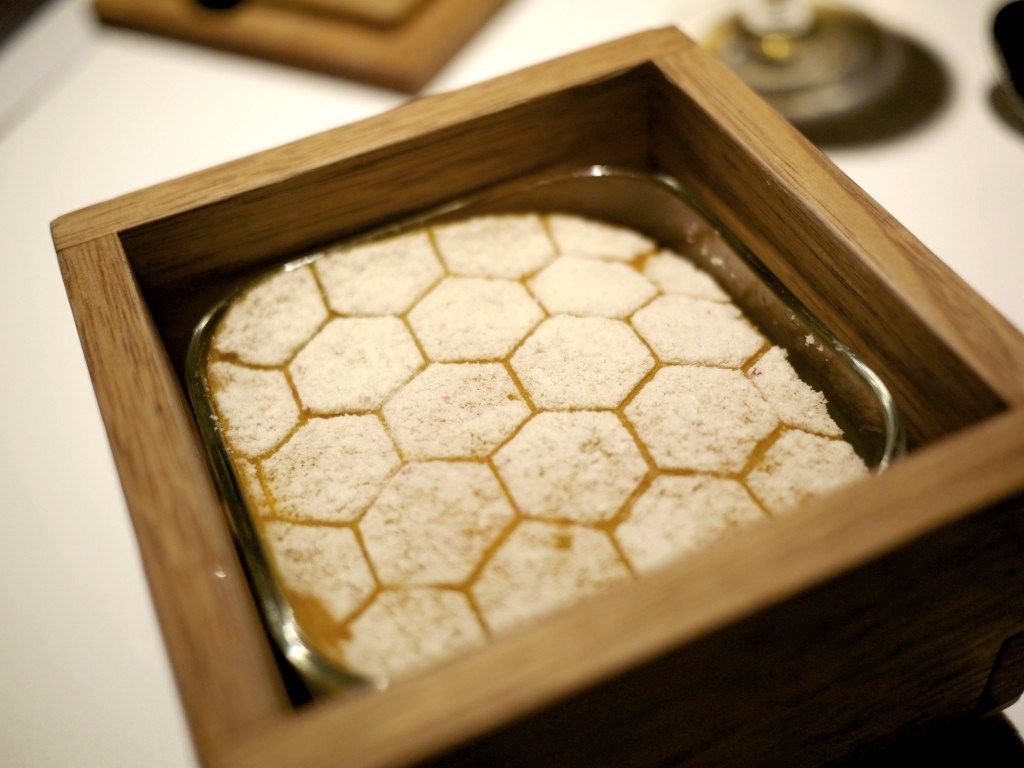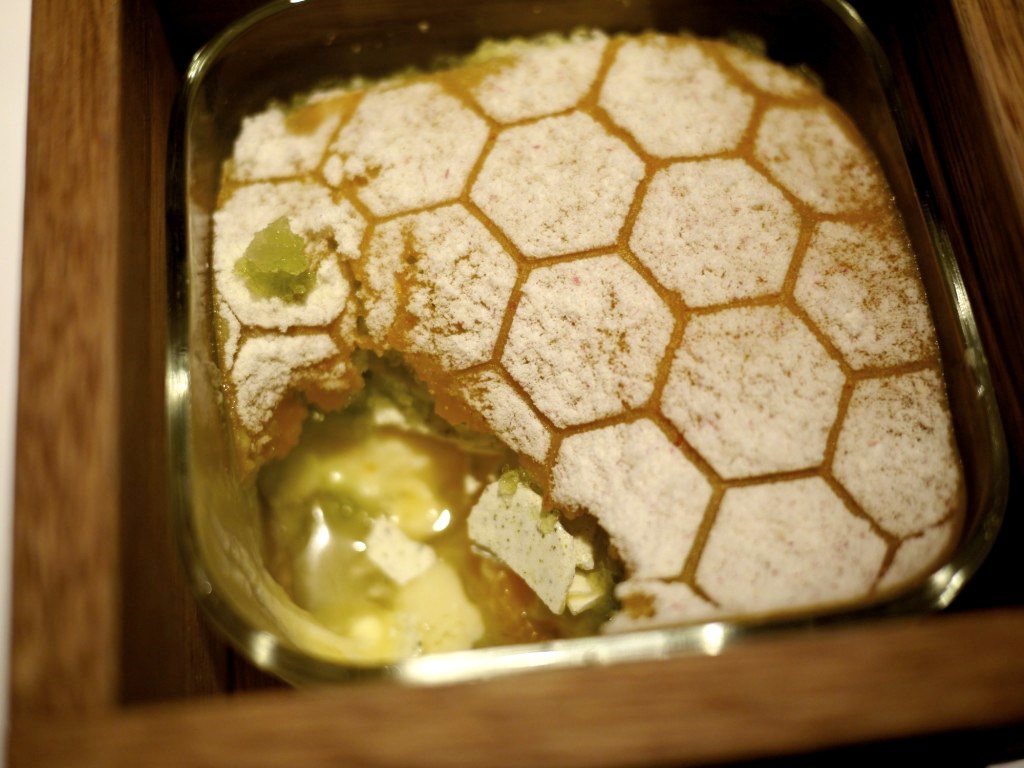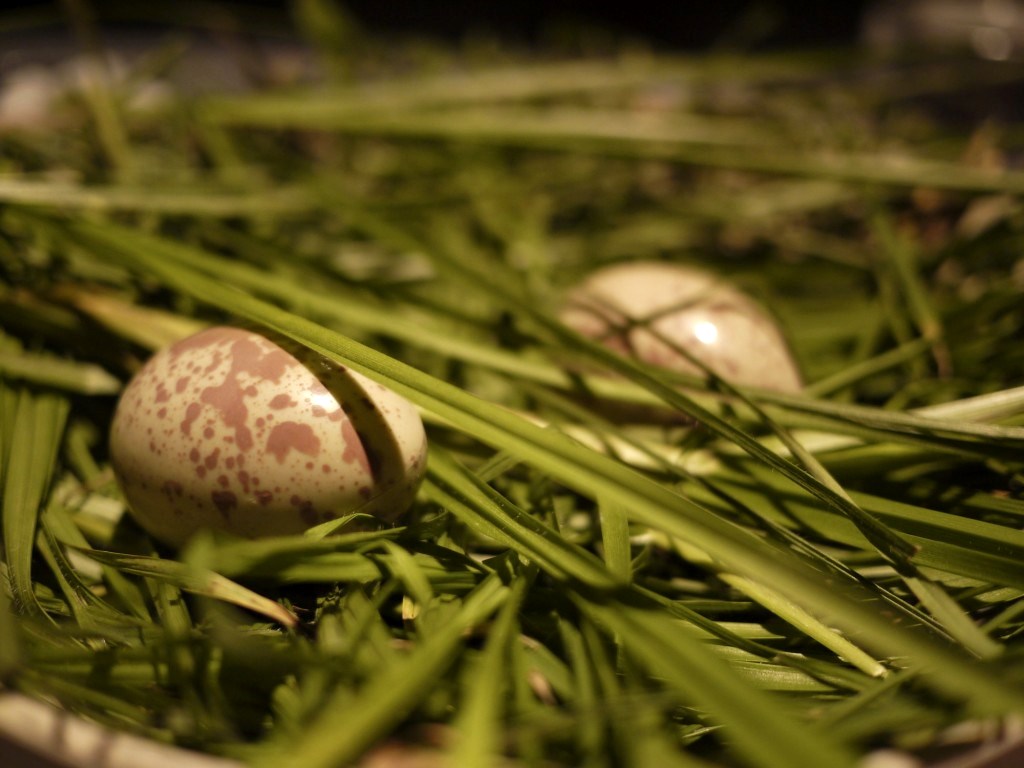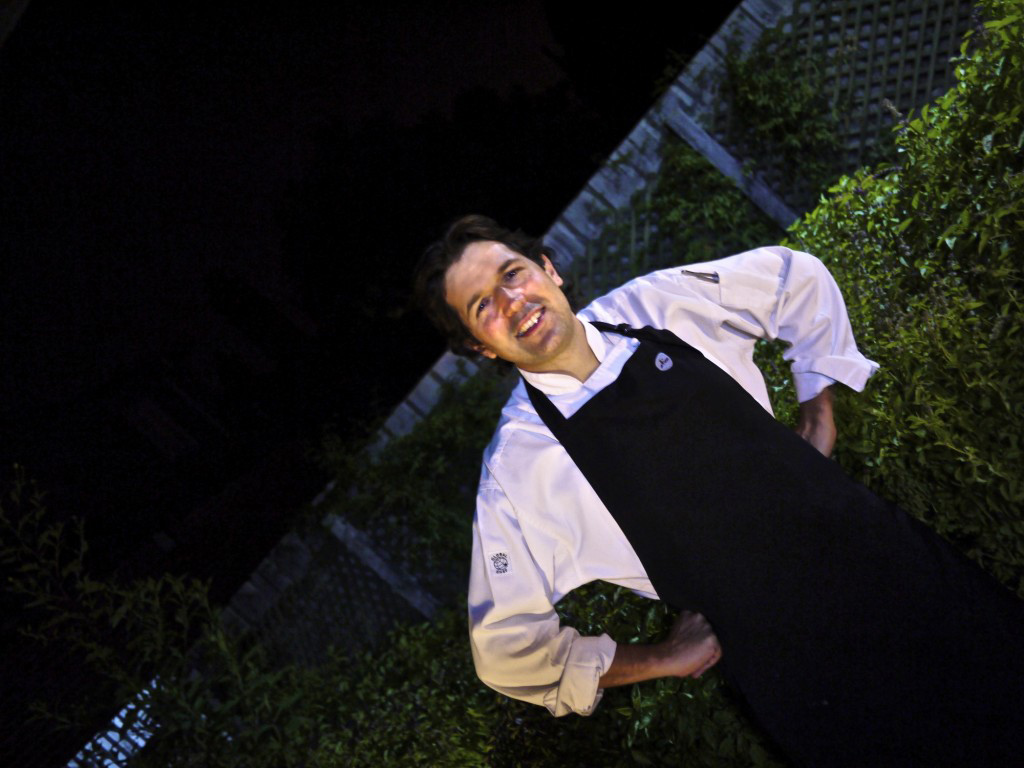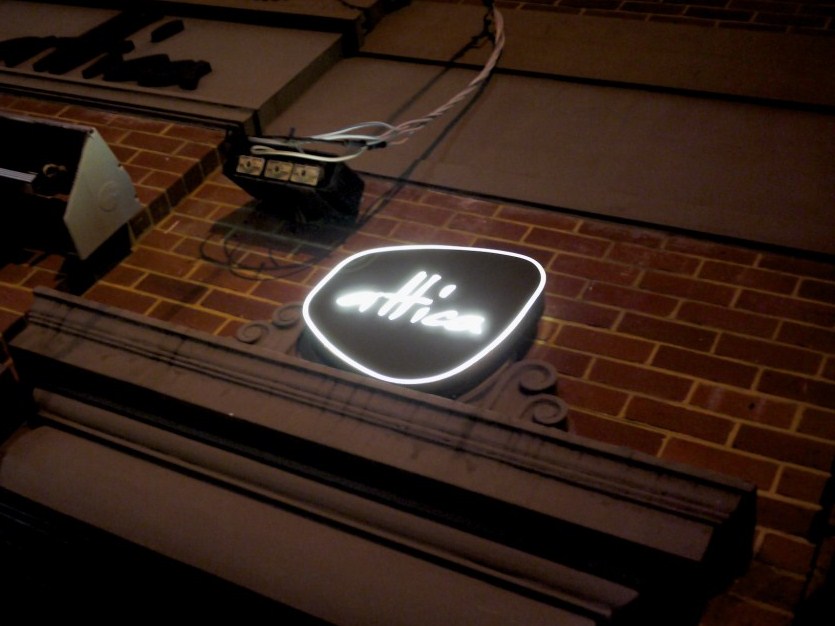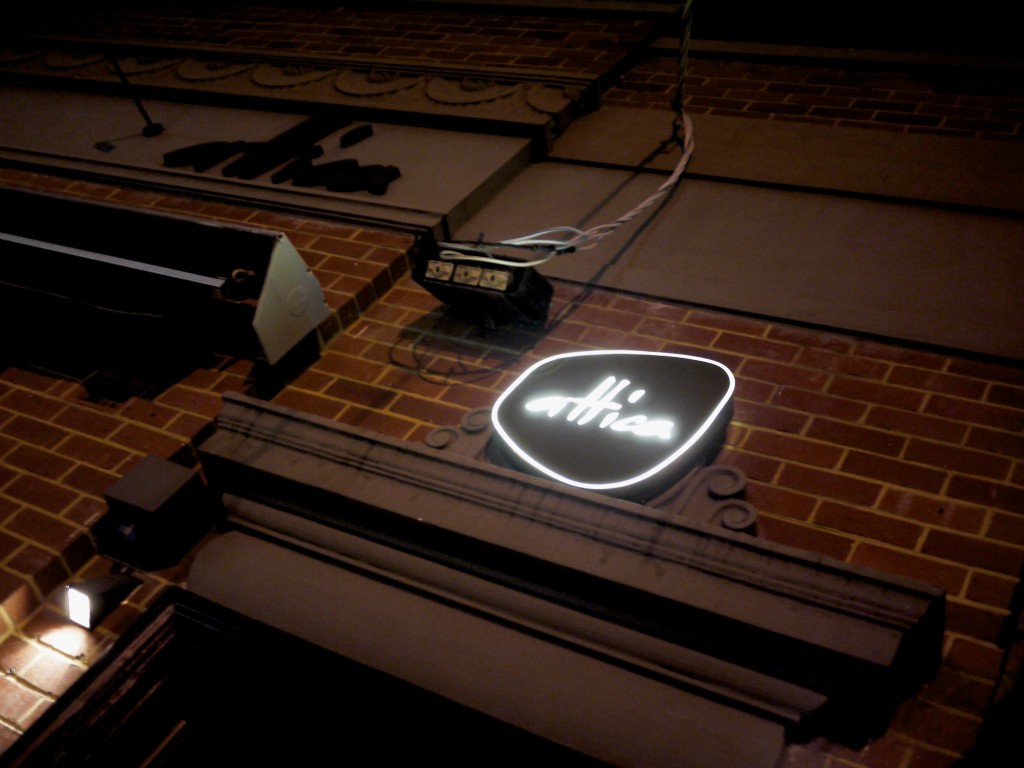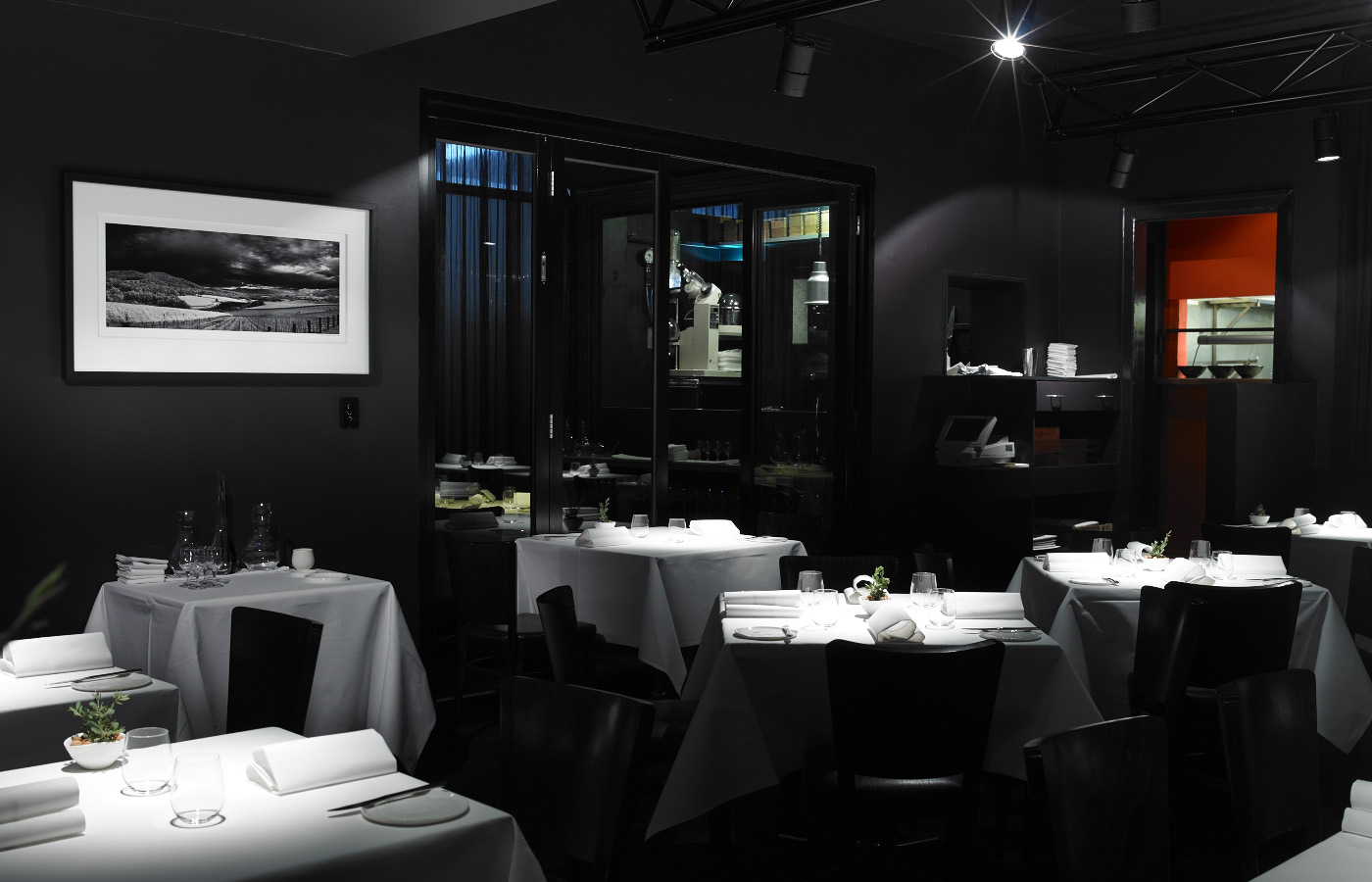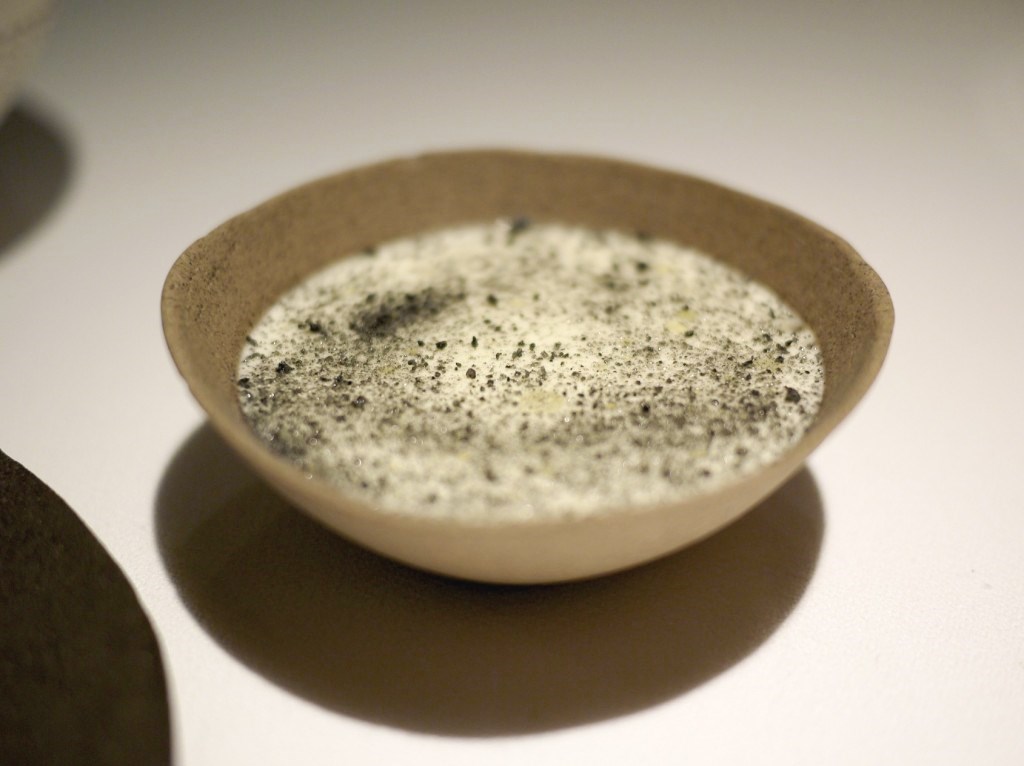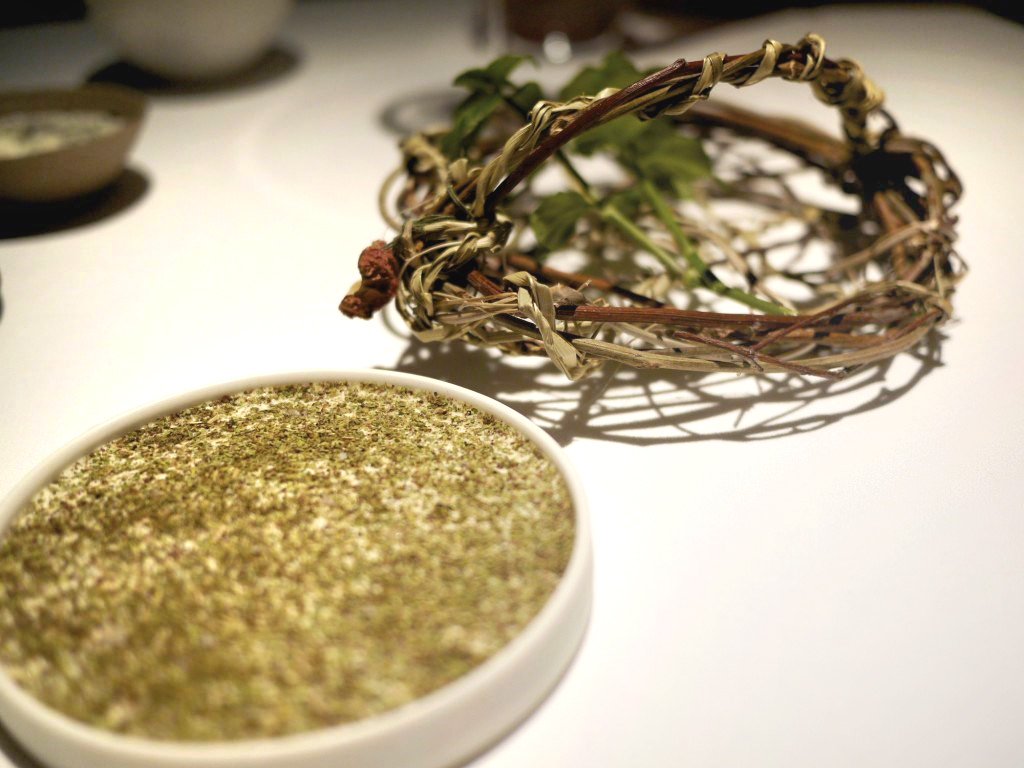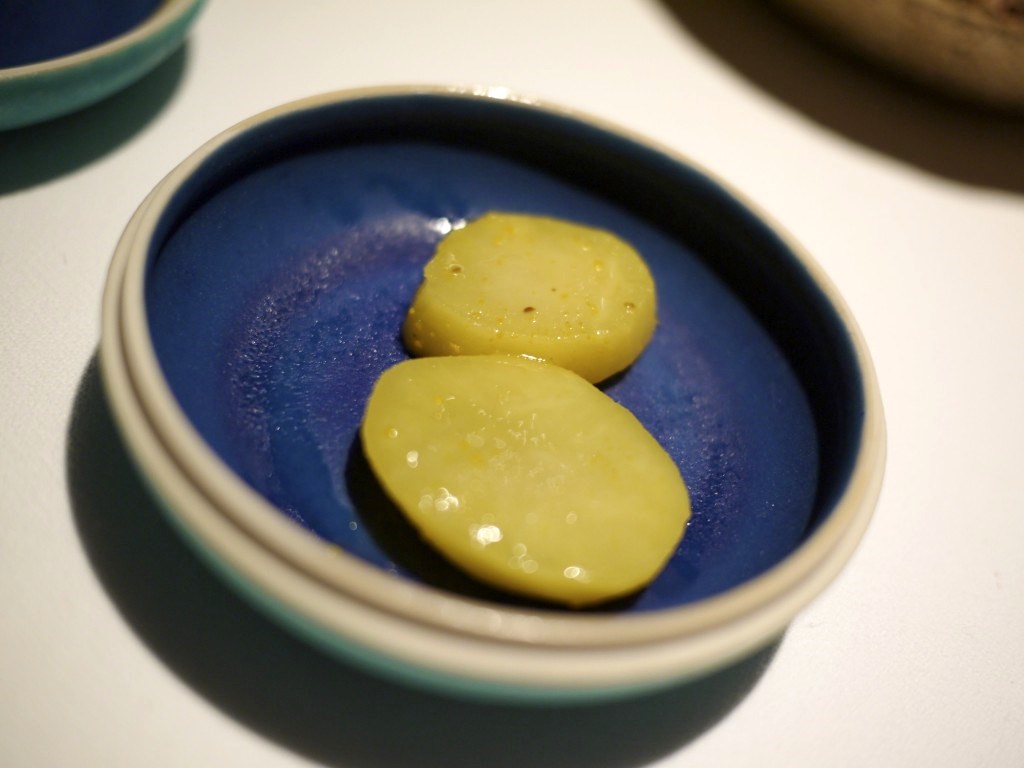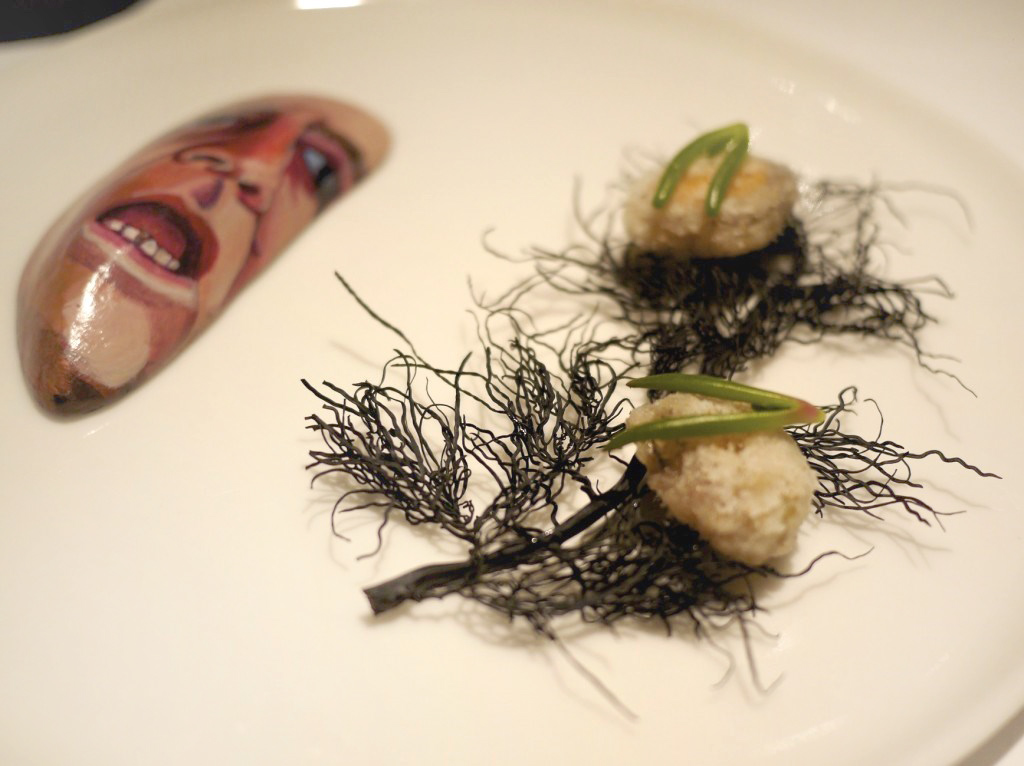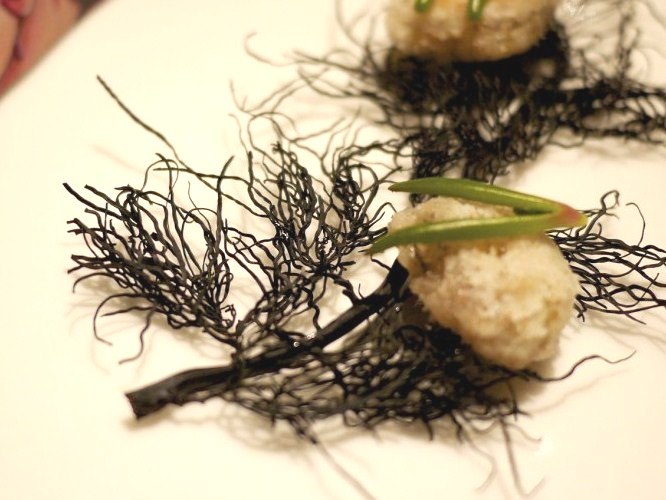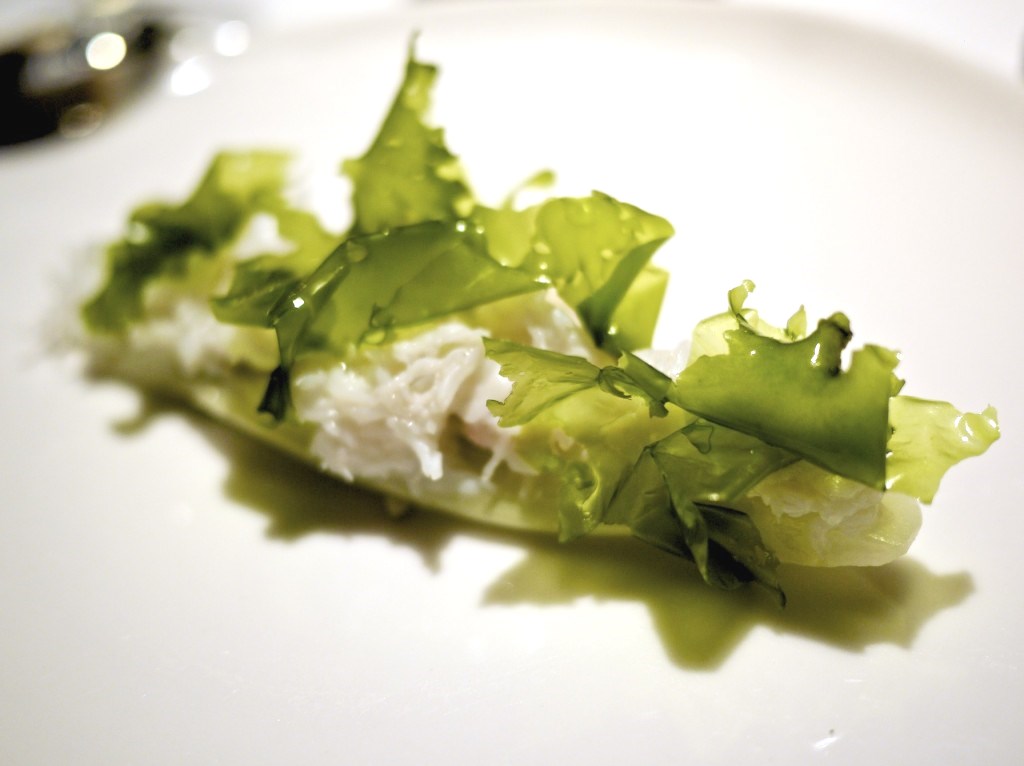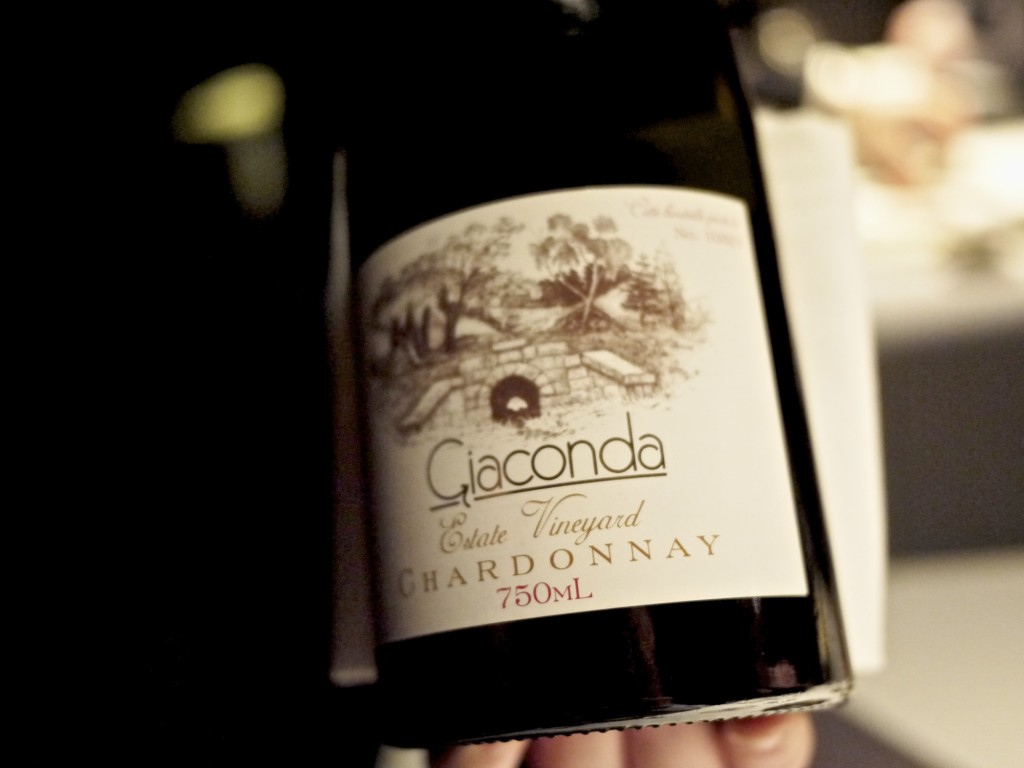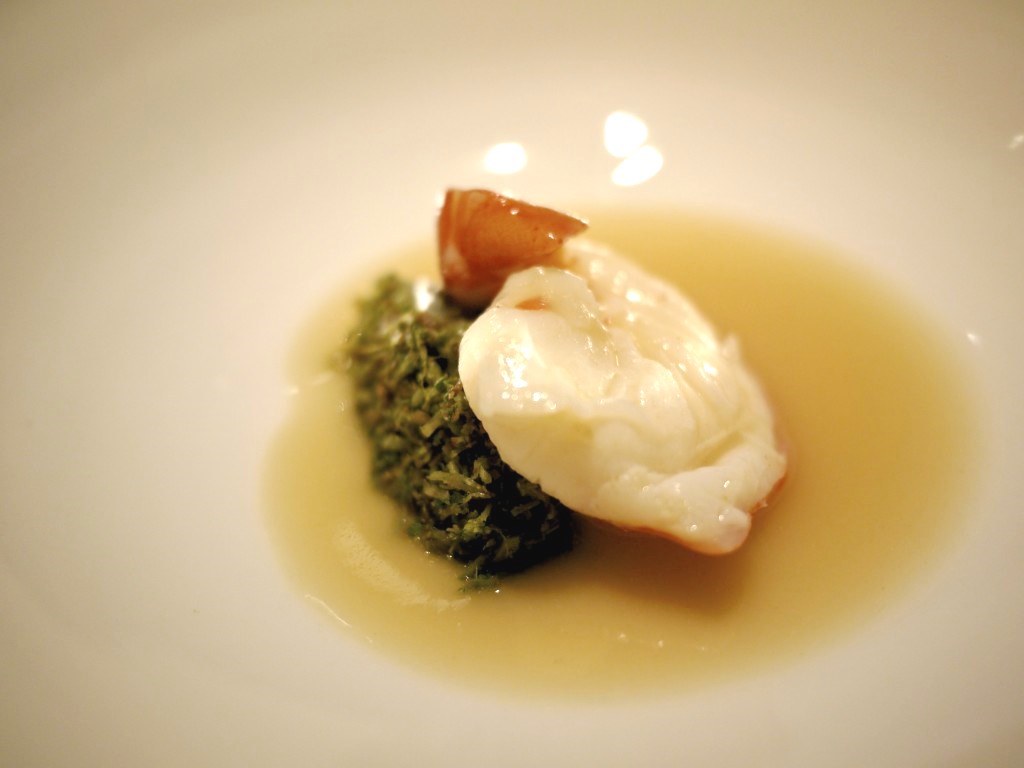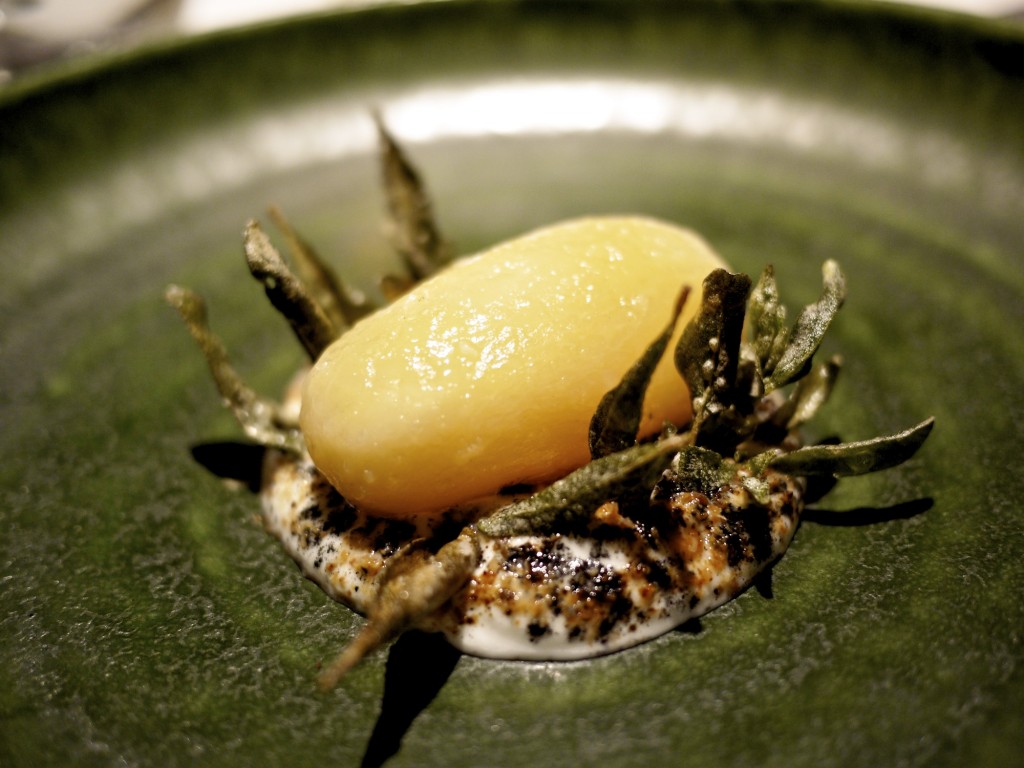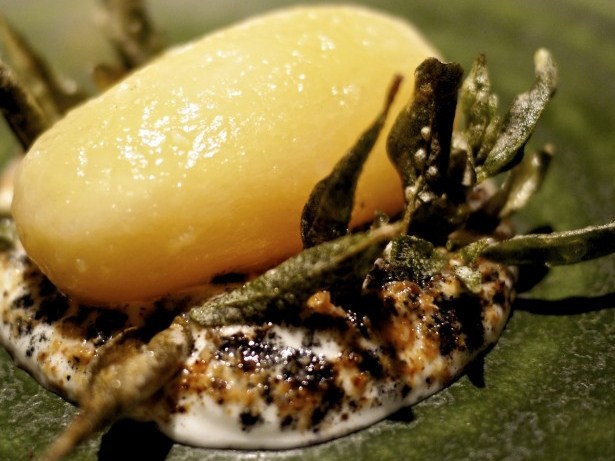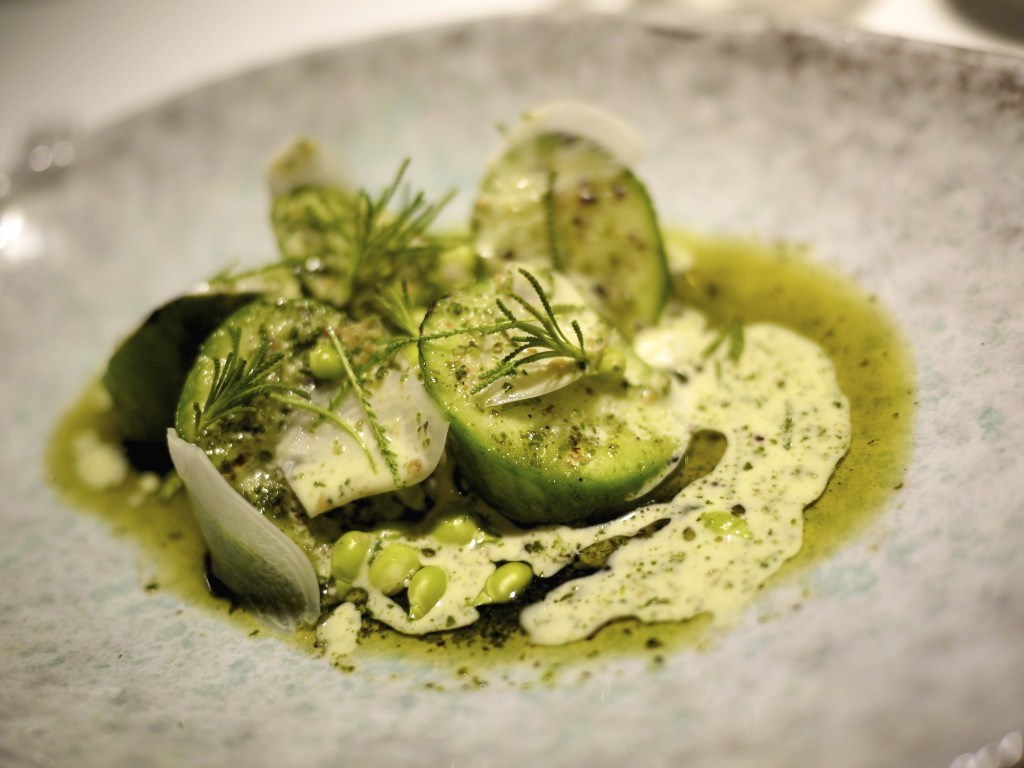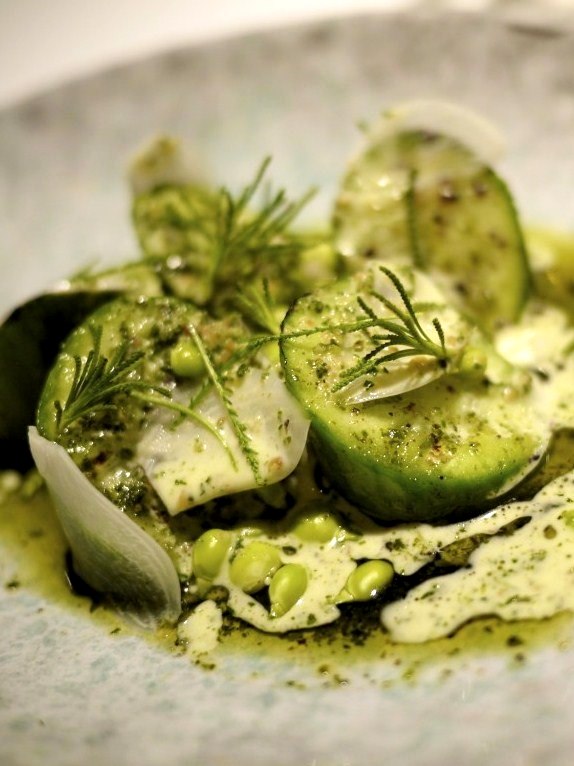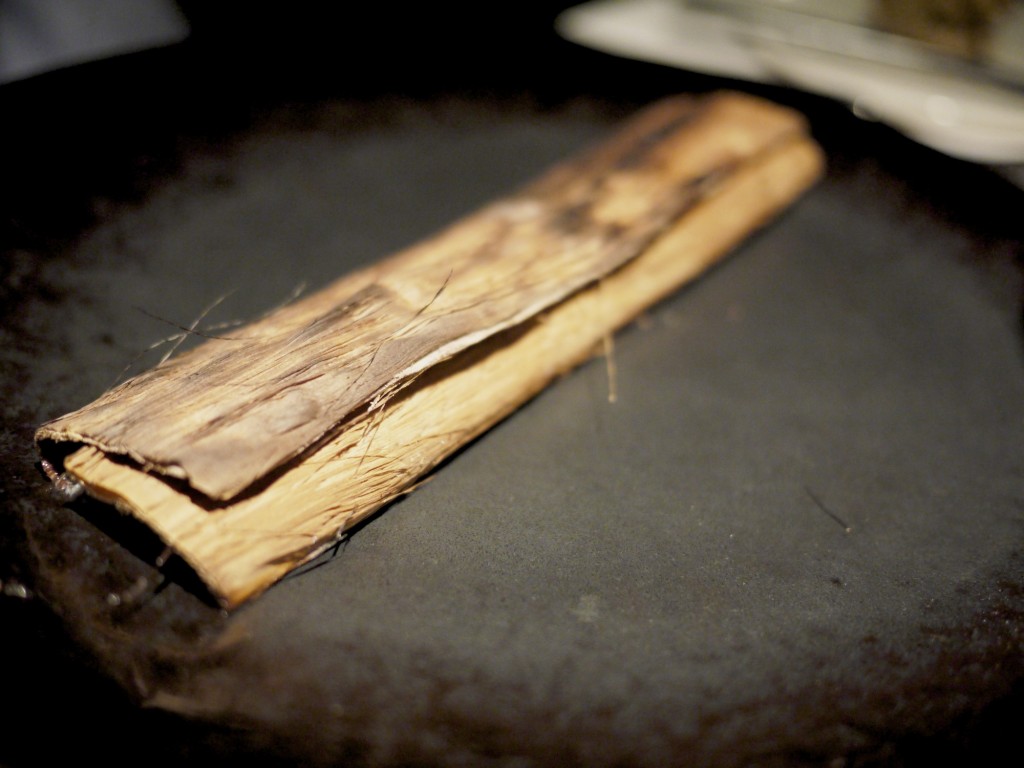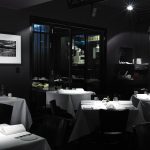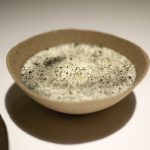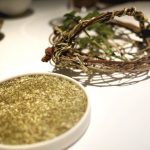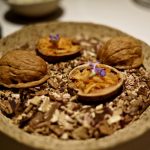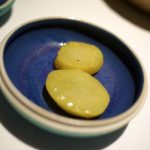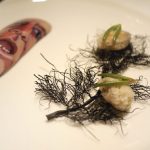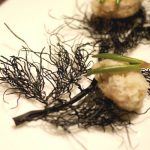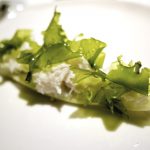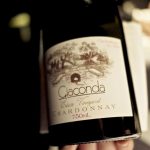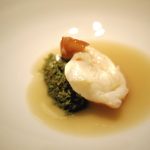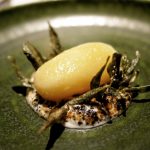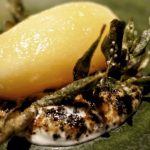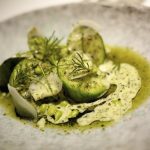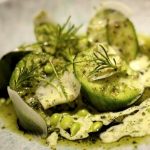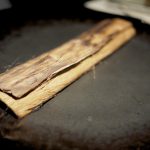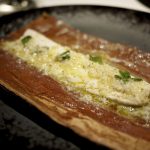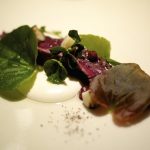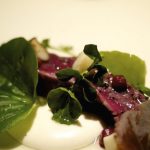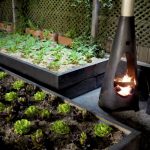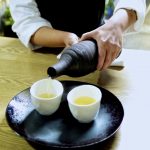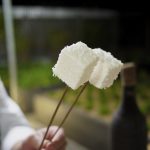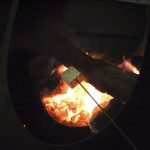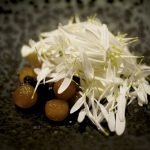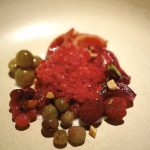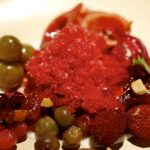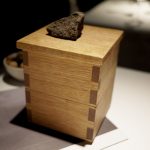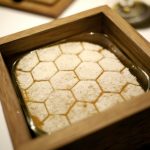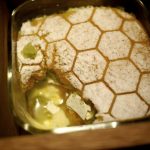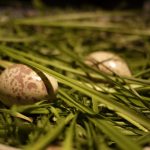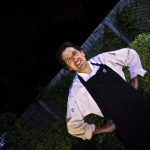CLICK ON THE MAIN PHOTO ABOVE TO VIEW CAPTIONS IN GALLERY FORMAT
Image 1: Review contributed by DWB. See here for full version.
As expected from a restaurant that shot up the San Pellegrino ranking in 2013 to an incredible, but deserved 21st position, the reservation backlog had extended to as far as next year.
Image 2: Stepping into Attica, we realised there’s always one thing that doesn’t change here. In typical fashion Banjo, Hannah and the team greeted us with a genuine smile, welcoming us back to their home. There’s a lot to be said about restaurants that have a personal touch to their service. Attica is one of only a handful in Australia that gets this so right.
Image 3: I was glad to see that the whipped olive oil with black sea salt was still being served and this time it came with a crusty wattleseed bread. The smokey mousse-like spread was absolutely divine but I was having a hard time fending my wife off as she wanted more than her fair share. Fortunately we had a second serving brought to us before a domestic erupted.
Image 4: First up were Mushroom plant leaves from Ben’s garden served with a house cultured crème fraîche, alpine pepper and lemon myrtle dip. Simple, earthy and fresh. I particularly enjoyed the contrast of the cool dip and the slight heat from the peppers.
Image 5: We were then presented a bowl of walnut shells that had been sliced in half. Inside them were some Walnut purée with shavings of pine mushrooms and rosemary flowers. The walnut sourced from Ballarat, Western Victoria, had a distinctly strong and earthy flavour and was complemented by the fine shavings of pine mushrooms. I was salivating at this point.
Image 6: The Pickled Jerusalem artichoke was a novelty for me. It had been pickled in honey, turmeric and cider, resulting in a very raw and meaty texture. The pickling process had packed in bags of flavours and also eliminated the gas producing effects typically associated with the root vegetable! A clever piece of cooking indeed.
Image 7: The finale of the amuse bouche segment went, quite literally, with a big bang in my mouth. The face of Mussel man, a.k.a Lance Wiffen from the Sea Bounty in Australia’s mussel capital, Portarlington, was carefully painted on one side of a mussel shell and served with Blue-lip mussels and sea saltbush.
Image 8: The delicious morsels had been shucked raw, crumbed and lightly fried for 35 seconds, allowing the moisture to be retained whilst adding a crispy textural contrast. The flavours of the sea just burst into my mouth when I bit into it with the slightly salty sea saltbush. I wanted more…
Image 9: Our first course of the evening was Crab, Lettuces from Land and Sea. The sweet baby snow crab rested on top of a luscious baby cos lettuce that had been poached in ginger balsamic and the sea lettuce on top was foraged by Ben himself. The finishing touches of a coconut vinaigrette cut through the sweet flesh of the delicate crab meat and the toasted buckwheat added that all needed crunch to complete the dish. I could almost see the ocean.
Image 10: The wine of the evening was undoubtedly the Giaconda ‘Estate’ Chardonnay 2011, Beechworth, Victoria. This encounter actually led us to Beechworth in October and I can see why they are considered one of, if not the best, Chardonnay producer in Australia. It had a powerful palate and complex characters with fine acidity comparable to ones from Burgundy. It was perfectly matched with…
Image 11: … our next course of Marron. The sweet marron tail sourced from Western Australia rested on a bed of sorrel from Ben’s garden that had been pulvarised with crispy fried chicken thighs after being marinated with coriander root. Hannah then poured over a delicious white onion and pork fat sauce to complete the dish. The sauce provided a good balance to the slightly bitter sorrel mixture. Suffice to say the freshwater marron tail was plump and perfectly executed. Yet another superb dish.
Image 12: I had fond memories of this dish from my first visit over three years ago. A simple dish of a potato cooked in the earth it was grown is anything but simple and truly captures Ben’s roots and humble origins. The waxy virginia rose potato was cooked sous-vide in earth for two hours, replicating the renown technique of the Maori Hangi in a kitchen. The result of this long-winded process was a uniformly creamy and velvety texture, not commonly associated with the humble potato.
Image 13: It was enthroned on a bed of smoked goats curd, coconut husk ash and crispy salt bush with freshly ground coffee; the culmination of which added an earthy undertone.
Image 14: Admittedly I wasn’t jumping off my seat when I read what was next on the menu but I was gravely mistaken, for the Cucumber, Holy Flax, Sauce of Burnet was another well balanced and clever dish. Shame on me for doubting.
Image 15: The cucumber pickled in chardonnay vinegar was charred ever so slightly before being plated up together with concentrated cucumber oil, holy flax from Ben’s garden, thinly sliced garlic that had been poached in verjus, peas and the all important Tasmanian cheddar that provided the seasoning. The burnet sauce enhanced the concentrated flavour of cucumber, leaving a very fresh aftertaste.
Image 16: The next dish utilised a traditional Aboriginal technique of cooking in paperbark. Underneath the tea tree paperbark was…
Image 17: … a deliciously succulent piece of Whiting that had been caught off Portarlington. It had been basted with butter, sea parsley and lemon myrtle before being wrapped in the paperbark. It was then slowly grilled over a mallee root charcoal before being blow torched right at the end. It was decadently buttery yet the slight tang from the lemon myrtle lifted the dish from becoming one dimensional.
Image 18: On to the closing act of the savory chapter with the Flinders Island Wallaby, Scorched Macadamia. If there’s one person who can truly treat this beautiful cut of meat, only available to a handful of people, with the respect it deserves, Ben is your man. The lightly seared wallaby loin served almost blue was incredibly tender and not overly gamey even with the accompanying rich black pudding.
Image 19: The bitter leaves of begonia, earthy macadamia purée and scorched nuts were beautiful props setting the natural scene of Australia on my palate. It was the perfect welcome to my permanent move to Down Under. I discreetly took my phone out to see where Flinders Island was. Damn, way too far. But no, I must find a way there…
Image 20: Not long after our suspiciously clean plates were whisked away, Banjo came over to lead us to the back garden. Most of the vegetables, herbs and flowers that night had come from here or across the road from his bigger plot of farm in Ripponlea Estate but we didn’t expect to find ourselves to a few treats outside as well. The icing on the cake was being able to chat with the grand maestro himself. As ever, Ben was just humble, gracious and carried a huge smile.
Image 21: The warm pink lady and granny smith apple drink kept us toasty whilst we chatted for a while. The scene was pretty familiar. We couldn’t stop thanking him for a superb meal and experience. Somewhat wistfully, we were sobering up from the copious amount of wine to the realisation that our meal was coming to an end.
Image 22: But before heading back in, Ben offered us a couple of sticks of marshmallows coated in freeze-dried coconut shavings…
Image 23: … to toast it over the outdoor fireplace he had installed. I know this makes me sound pretty sad, but I never toasted a marshmallow in my life and hardly knew what to do. As expected, half my marshmallow had melted into the flames of the abyss. “Amateur”, my wife chuckled as she woofed down her perfectly toasted one. It wasn’t too long after that we decided to go back inside as the temperature was in the single digits. It was winter in Australia after all.
Image 24: The first dessert course of the Fresh Curd Ice Cream and Preserved Blueberries. The ice cream had been churned using a fromage blanc goats cheese from Meredith Dairy in Dyalesford. Within this there was a chewy pieces of dehydrated pink lady apple, crystal Turkish apple tea, and poached pear balls overlayed with chrysanthemum petals. It was a balanced dish of floral notes, fresh curd and sweet fruits.
Image 25: We had one last surprise prior to the grand finale with the Native fruits of Australia. The fruits had been picked and supplied by the Outback Pride Project, an organisation that works with the Aboriginal community to promote native Australian food. I had never come across any of them! They were poached Quandongs, candied Rosela Hibiscus petals, earthy Davidson’s plums, apple-like Muntries, Riberries and a fairly tart Desert Lime.
Image 26: In the centre were some wattleseed and honey custard topped with native currant ice and tucked underneath some of Meredith Dairy’s sheep’s milk yoghurt with eucalyptus. Could it get more Australian? It was a superb showcase of the native produce, without being cliche or twee. Most importantly it was very delicious.
Image 27: Next was the highlight of the meal, the pièce de résistance, the Plight of the bees, served in this beautifully crafted Tasmanian oak box resembling a miniature beehive box; This was essentially a celebration of honey. To be precise, two distinct types of honey from Ben’s native homeland of New Zealand. The darker complex honeydew honey or Forest honey was a type of honey made—not from blossom nectar—but from honeydew excreted by plant sucking insects such as aphids.
Image 28: It was utilised to poach an impossibly thin layer of pumpkin, which subsequently was dusted with freeze-dried apple shavings and pressed with hexagonal patterns to represent the honeycomb. As you pierced through the outer layer you immediately realised how complex this dish was in harmonising contrasting textures, flavours and temperatures. A dish that took Ben 18 months to perfect after 50 variations; I was glad he was persistent because this may possibly be the best dessert dish I have had to date.
Image 29: From the acidity of fennel ice, fresh mandarin wedges and distilled mandarin, to the crunchy meringue and soft layer of pumpkin, all held together by the centrepiece of the deliciously creamy curd that had been infused with wild lemon thyme honey. What surprised me above all was the absence of extreme sweetness and stickiness normally associated with honey. If there’s one person’s brain I would like to tap into, that would be Ben for dreaming up this dish. It was sheer genius.
Image 30: One last gift from the Attica team who just couldn’t have done more to make this meal more perfect – a couple of hand painted chocolate caramel Pukeko eggs that went ever so well with my shot of espresso.
Image 31: A culinary experience in Attica is far from any pretension. The cooking here is captivating, intelligent and educating, yet relaxing and indulgent but above all delicious. Each dish told a story or an encounter experienced by Ben and the meal represented his personal journey that had lead him here.
